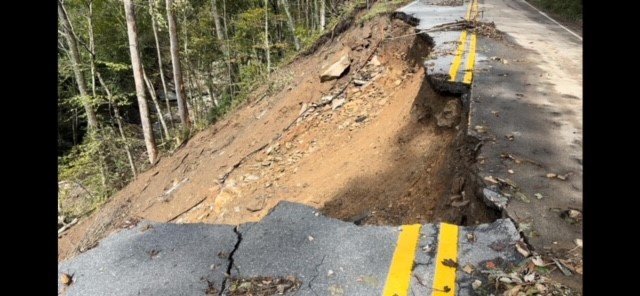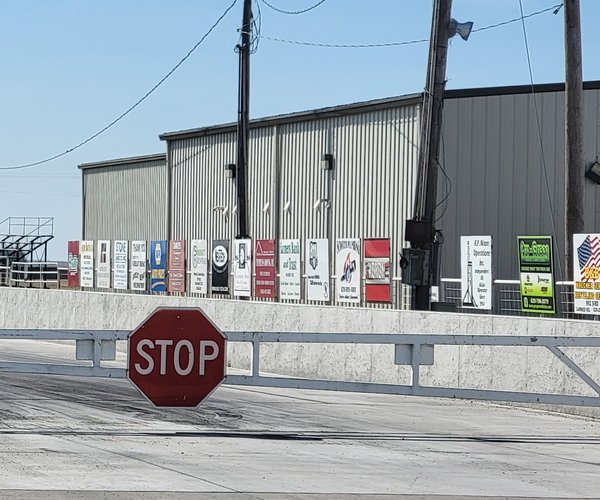BY KEITH LIPPOLDT
klippoldt@gbtribune.com
Hurricane Helene pounded the eastern seaboard of the United States Sept. 24-27 before veering inland into western North Carolina. The storm wiped out entire towns, destroyed major highways and interstates, created deadly mudslides and is currently responsible for 220 deaths, a number that will surely climb once additional bodies are identified.
After the storm passed, thousands were left homeless without food, water and emergency supplies, including prescription medicines.
These people needed help. But traditional help wasn’t going to get to them soon enough.
Russell Hedrick, a large regenerative farmer in the Carolina region, and a major regenerative farm influencer worldwide, had been using drone technology to monitor his fields and was familiar with Great Bend native Sam Thier, an independent agent and drone specialist for Bestway Ag based in Wisconsin. Hedrick, sensing the urgency of the recovery, contacted Thier and two other drone pilots and arranged for them to join in the efforts.
“I’m a farmer and I travel the country and the world teaching other farmers about regenerative practices,” he said. “And we do that using drones. We use a lot of drones. Sam (Thier) has been down here twice and trained us up on the spray drones and the mapping drones. We use quite a bit of drones in our production.”
Thier wasn’t exactly sure what he was heading into but he was glad he made the trip.
“We helped a lot of people, There’s no doubt about that,” Thier said. “We were able to deliver food, water, baby formula, medicine and lots of other things to people that were completely cut off from the outside world. We did a lot of thermal drone work as well, trying to locate missing bodies that were washed away in the flooding and mudslides. I really feel like we served a major purpose. It was Russell’s idea to use the drones.”
Thier has been gone from the devastation for nearly a month but has returned to the region to work with Hedrick on drone ag training. Hedrick says there has been progress made on the cleanup front but there are still several areas that could take years to rebuild — if they even are rebuilt.
“Burnsville and Bakersville had over 40 inches of water and their water treatment plants got washed away,” he said. “They’re saying there may not be drinkable water up there until August of 2025. And that’s just a guess. It washed away all of their sanitation facilities for cleaning water and they’re saying it will be years before that is rebuilt. The North Carolina DOT did a phenomenal job getting the main highways open but when you go to smaller communities it still looks like a bomb went off. I’m not knocking on anything other than what I’ve seen but FEMA has actually done a horrible job.
“I’ll give you an example. First of all, we didn’t see a single FEMA employee for about a week after the hurricane. A person I know applied for FEMA aid and FEMA will call you back. If you don’t answer the phone on the first call they terminate your application. This person has been terminated 13 times while waiting for his $750 aid check. And remember, there is very little to no cell service since the hurricane.”
Hedrick also says local government entities were not open to the outside help they were receiving and actually attempted to make them stop working.
“There was a road crew out of West Virginia that came with dozers, excavators and skid steers,” he said. “They literally built an entire road system from Bat Cave to Chimney Rock in about a week and a half. But the county commissioners met them at the county line and told them they couldn’t go any further because they didn’t want them operating like that in their county.
“One of the commissioners told the Sheriff’s Department that the crew threatened someone and 30 sheriff’s officers, dressed in tactical gear, showed up to stop these guys from working. The citizens found out about it and, buddy, there was a revolt. And I mean it was enough of a revolt that they were back to work within a few hours. I don’t think people understand the resolve of these mountain people. I’m telling you, it’s not the government getting things done. These are everyday people showing up, donating their time and their money, their diesel fuel and their equipment just getting work done.”
Another major issue is the reported “official” death toll that is currently at 220 people. Hedrick says this number will grow tremendously once all the bodies have been identified. And, with his connections, he has proof to back up his claims.
“There’s been about 3,400 that have been found safe and, as of last week, there were still over 600 missing,” he said. “I’m not knocking the government. I know they have their protocols, but the death toll they have published is not correct. They’re not counting them as dead until they identify them.”
Another aspect of the devastation is what is left of the land.
“There’s going to be farms that will never be farmed again,” he said. "There will be land that will never be fixed. What people don’t understand is on the agriculture side, there’s cattle in the hills and crops in the valley. That’s a lot of ag revenue that got tore up, and those specialty crops (tobacco, apples, peppers, tomatoes and other various vegetables) just won’t be there any more.”







